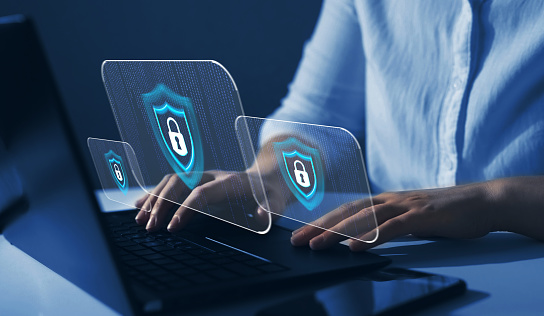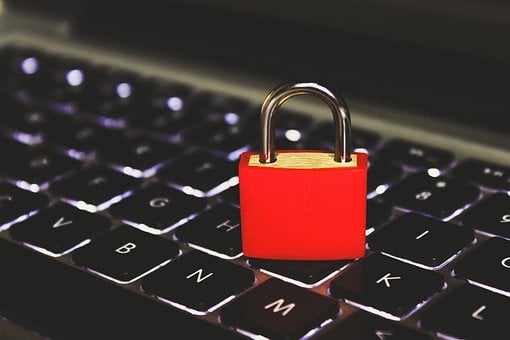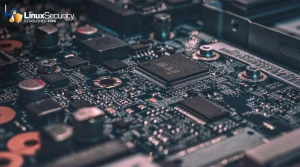Fortifying Email Security with Infosec Through the SDLC

Imagine releasing a software solution into the market only to realize the user cannot use the app properly. They have been reporting numerous bugs, which has lowered your reputation and reliability.
 The Software Development Life Cycle (SDLC) is essential to a developer’s life. It guides the entire software development project from conception to development, ensuring efficiency, quality, and reliability. It can help the software development company mitigate risks and control costs, which helps release an excellent and usable product to the market.
The Software Development Life Cycle (SDLC) is essential to a developer’s life. It guides the entire software development project from conception to development, ensuring efficiency, quality, and reliability. It can help the software development company mitigate risks and control costs, which helps release an excellent and usable product to the market.
SDLC has built a symbiotic relationship with Information Security (InfoSec) to thwart cybercrime in its earliest stages. This helps safeguard and protect sensitive data from cyber threats by incorporating security measures at every lifecycle stage.
These security protocols attempt to fortify software to mitigate any possible risks. Email is a crucial part of the infosec strategy. It is central to all phishing and malware attacks. This article will explore how Linux admins and organizations can prioritize email security to create a digital fortress against cyberattacks.
What Is the Relevance of SDLC to Infosec?
The software development lifecycle (SDLC) provides a roadmap for projects that helps development companies with the various phases: planning, design, development, testing, and deployment.
Implementing the security protocols at every stage is equally crucial to understanding the objectives, aligning them with the code, and ensuring seamless deployment. This will help your software stay protected from unnecessary threats and issues.
What Are the Phases of the SDLC?
The phases of the SDLC are as follows:
The Planning Phase
The planning phase is when the entire business, marketing, sales, operations, and development team meets to define the project's goals and objectives. During this phase, they determine the scope, initial requirements, and feature list.
The security team must determine the potential security issues within the scope or requirements. They must define the security objectives and ensure they align with the business objectives. This will help set the foundation for security before starting the development.
The Design Phase
During the design phase, the design team (architects, user experience designers, and interface designers) will start determining the best-fit architecture for the software. They will also design the application's UX and UI. In this phase, the team will work on wireframes, interactions, and experiences in detail.
The infosec team will work closely with your team to incorporate security features like access control and encryption protocols into the application. They will even help with authentication mechanisms. This will help you create a highly secure final product aligned with your needs.
The Development Phase
During the development phase, the developers will convert the interactions into code and work on defining them smoothly. The infosec team will work on detailed code reviews and vulnerability assessments. They will also conduct penetration testing that can help identify and remediate security flaws.
You can use the infosec strategy to define the development workflow and determine the vulnerabilities early. This will reduce the risk of exploitation within a deployed application.
The Testing Phase
During the testing phase, the testing team will validate the functionality and usability of the application. They will test each unit and its integration to determine the application's ability.
During this phase, the infosec team will validate the security controls and their ability. They will also ensure that the software is compliant with the regulations. In detail, they will conduct all the tests, including the vulnerability and penetration scans.
The Deployment Phase
The deployment phase is when the entire software is released to particular platforms. It is optimized and made ready for the platform. The infosec team also works on securing the deployment protocols.
This phase will include secure configuration settings and monitoring tools to help identify security incidents.
The Maintenance Phase
The maintenance phase is when the entire team works on updating the code and upgrading the software to meet the latest requirements. They continuously improve the software to meet the users' needs.
The infosec team will incorporate the security patches and vulnerability assessments throughout this phase. They will address potential threats and maintain the security of the application.
What Email Security Concerns Do Businesses Face?
 Email security is one of the main concerns for all organizations. This is the most vulnerable path that can attract cyber threats and criminals. A vulnerable email system is equal to a ticking bomb.
Email security is one of the main concerns for all organizations. This is the most vulnerable path that can attract cyber threats and criminals. A vulnerable email system is equal to a ticking bomb.
The most common email threats include phishing and malware attacks. Phishing is when the attackers deceive the users by allowing them to divulge sensitive information. These attacks occur when the sender uses a known identity to lure you into clicking on the content or link. This impersonation can cost your business data and reputation loss.
Malware attacks can help hackers access your system via email attachments or links, compromising the safety of your sensitive data. These attacks can disrupt your operations and lead to significant financial losses. Ransomware is one of the most commonly found malware that can encrypt files. The hacker demands payment for the data that they have stolen from you. This kind of attack can damage your business reputation and cause downtime.
Business email compromise (BEC) is another type of attack that occurs at a higher level. The company can suffer significant losses when trusted vendors or executives manipulate employees to transfer funds or confidential data. This is an impersonation attack that has cost several businesses.
Email security breaches can cost your business more than financial losses. The data breach can also compromise your business’s legal outfit, causing reputational damage and a lot of lawsuits.
You must ensure immediate incident response and remediation, which also costs the company. You may face issues gaining your customers' trust again, which could also have long-term implications for the business.
Email is an important part of business communication. As a result, you must prioritize security measures, including employee training and multi-factor authentication, to mitigate the risks via this medium. You can also adopt the best measures to reduce breaches and protect assets.
How Can I Integrate Infosec into the SDLC Phases?
Regarding email security, you must integrate infosec in every phase of SDLC. This will ensure email security is aligned with the overall security objectives and software requirements.
Planning
During this phase, you must conduct a detailed assessment of the security threats to your email. You must make a note of the phishing attacks and malware distribution. Additionally, ensure you have added unauthorized access to your list.
Once you have made the list, you can define the security requirements for email communication. Encryption during communication is a standard protocol. Similarly, you can define strategies for the best outcomes, such as access control and email filtering.
Design
You must incorporate security protocols like Transport Layer Security. This will encrypt the email traffic and protect the business against eavesdropping.
You must also design systems to thwart email threats. These systems will include spam filtering, sender authentication, and attachment scanning.
Development
You must implement secure coding practices to help mitigate email vulnerabilities. These practices include input validation, output encoding, and email attachment security.
You must also implement protocols to help avoid email spoofing and phishing. During this phase, you must consider email authentication protocols and sender identity validation.
Testing
Penetration and vulnerability scanning can help you detect the resilience of your email systems. It helps you understand the security you must establish to protect them from cyberattacks.
You can also conduct phishing in simulation to make your employees more aware and gauge their susceptibility to phishing. You can use the testing phase to determine the training you need
Deployment
You must ensure secure deployment to ensure the best fit for email systems. Make sure to use the proper encryption for email traffic. You must also configure the email servers and clients using the best practices and recommended settings.
You can also use cloud email security solutions to inspect email traffic and ensure that only safe, legitimate mail reaches the inbox. This will help you block out suspicious emails and identify malicious content.
Maintenance
Patching email systems against newly found vulnerabilities is a significant duty of the developer during the maintenance phase. This phase also trains and educates employees on email best practices and response procedures.
Tools & Best Practices for Securing Email Through the SDLC
 Specific tools, frameworks, and standard practices may help establish the necessary infrastructure when securing email through the SDLC.
Specific tools, frameworks, and standard practices may help establish the necessary infrastructure when securing email through the SDLC.
- You must adhere to the coding standards and frameworks defined to create robust and secure systems. These standards include coding validation and output encoding. You must also ensure authentication mechanisms that promote security. Additionally, you must think through error-handling processes.
- You must use the right tools to define code analysis and vulnerability scanning. For the best results, you must also conduct penetration testing.
- When integrating third-party vendors with email systems, you must thoroughly assess them. The solutions must be validated before being incorporated into your email security systems. You could also evaluate the vendor’s security practices and compliance certifications before integrating them into your email platform.
- Conducting detailed employee training and awareness programs can help educate them on best practices for handling email. You can teach them about suspicious attachments and fraudulent emails. These sessions can help you empower the employees and protect them against the threats.
- As a practice, you must encrypt the sensitive data within the email and use email protocols like Transport Layer Security and End-to-end encryption to protect the email content.
- You must monitor and audit email activity regularly. This will help you identify anomalies in the early stages. You can also use email logs and access controls to thwart unauthorized access to the email.
Future Directions & Emerging Trends in Email Security Threats
It is equally important to stay prepared for the future. Several new email security threats are posing new challenges in your SDLC.
- AI-powered Phishing: Many cybercriminals have begun adopting the latest technologies, such as AI, to create sophisticated emails for phishing. These emails seem legitimate and personalized, making it difficult for users to detect the phishing attack.
- Deep Fake Impersonation: Hackers have begun using realistic audio and video content to create impersonations. They seem so real that users tend to take action, such as transferring funds or information. This can lead to reputation or data loss.
- Zero-day Exploits: In this case, the hackers will target already known email vulnerabilities. These could exist in the server, client, or protocols. Traditional security defenses can easily bypass these threats.
- Supply Chain Attacks: Many attackers involve third-party vendors or suppliers to gain information, which can pose a risk to the organization.
Challenges in Integrating Infosec with SDLC
Your business must anticipate the future landscape and the challenges while integrating infosec with SDLC. Challenges include:
- Adopting agile methodologies while integrating infosec with SDLC is crucial. This can help with iterative development and ensure complete speed with security assessments and testing. It can also help you choose innovative development approaches and automate specific processes.
- You may face issues when migrating apps or data to a cloud environment. This can also complicate the security aspects. You must have a clear and defined security roadmap with an expert to help overcome the complexities of cloud configuration management and data protection.
Our Final Thoughts on Improving Email Security Through the SDLC
Your business must integrate Infosec with SDLC to safeguard email communication throughout the development lifecycle. It can help you protect communications and encrypt data to protect against cyber threats.
Infosec protocols can effectively boost email security and reduce cyberattack risks. To ensure best security practices are implemented, the software development team should collaborate with the security team to prioritize security during development.
Defining best practices and streamlining communication to fortify email security is equally crucial.





















